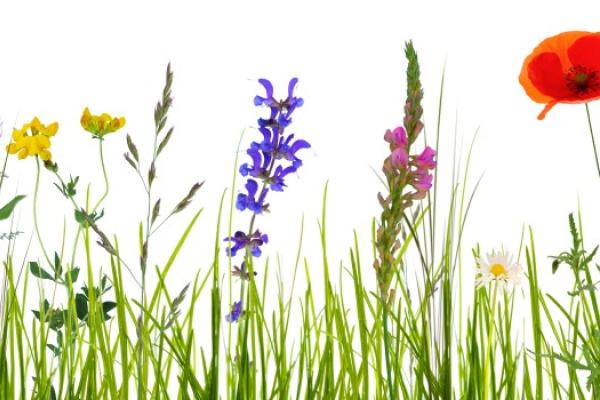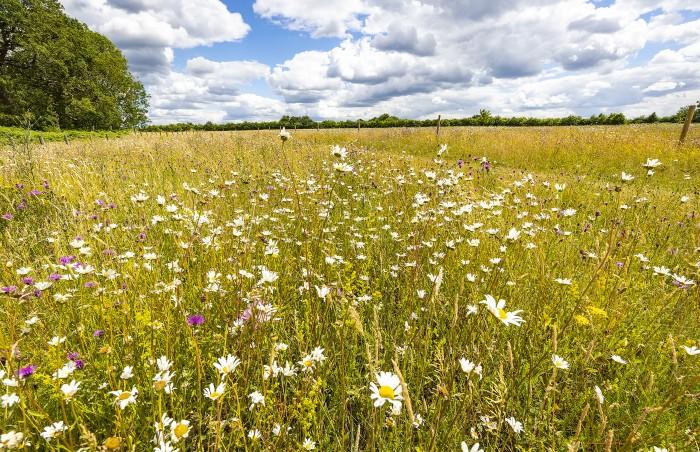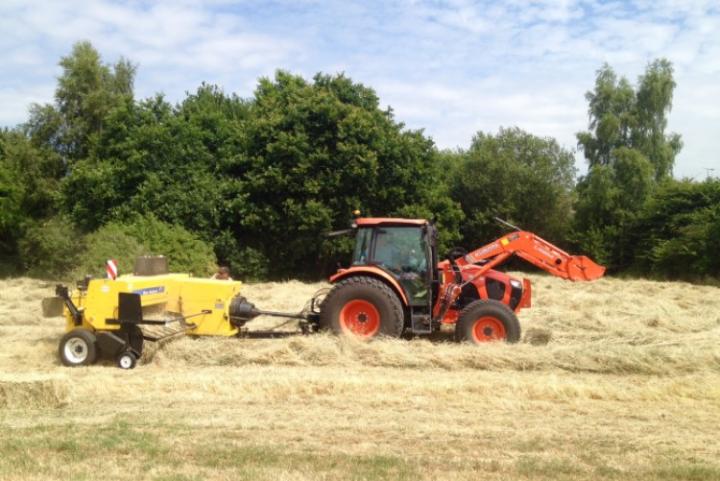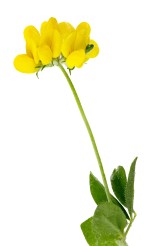
Meadows
We are fortunate to have lots of great places for activities, such as walking the dog, having a picnic or playing sports in Bracknell Forest. In this guide, we look at meadows, which are the most attractive and ecologically rich type of grasslands.
Attracting pollinators
Have you visited Frost Folly in Warfield and Peacock Meadows north in Binfield? These spaces change with the seasons but are at their best during the spring and summer months, when in bloom.
Wildflowers like ragged-robin and devil’s-bit scabious add a splash of colour and attract bees and butterflies. These insects help with pollination, which is essential in producing the next generation of plants.
Other benefits include:
- provides food and shelter for wildlife
- captures and stores carbon, which helps to tackle climate change
- slows down surface water runoff
- contributes to good soil health
- offers lovely scenery for residents to enjoy

Under threat
According to environmental charity Plantlife, over 97% of wildflower meadows in the UK have been lost since the 1930s. It is important that we act now to help preserve and enhance our local meadows for the benefit of people and wildlife.
Action we are taking
We cut the grass once a year, during the late summer, and remove the clippings. This encourages wildflowers to grow and provides food and shelter for wildlife when the vegetation is left to grow longer.
We leave a quarter of our meadows uncut each year to provide overwintering habitat for wildlife and early nesting opportunities for birds in the spring.

At some of our sites we use livestock, such as cattle and sheep, to graze our meadows. This conservation grazing is also effective in boosting biodiversity.

No Mow May
Plantlife is a leading UK conservation charity. Their annual #NoMowMay campaign, which launched in 2019, urges everyone to “pack away the lawnmower, let wildflowers grow freely and help nature.”
We joined this national campaign in 2025 to encourage greater biodiversity in 10 of our greenspaces.
There is no cost saving to us or our contractor by taking part in No Mow May. Our rangers took part in this campaign as they are passionate about biodiversity! It also helps to fulfil actions in our Biodiversity Action Plan. It’s one of many things we’re doing to address the joint biodiversity and climate crises.
Targeted approach
We used a targeted approach to stopping grass cutting this May. We chose 10 sites for their suitability to allow the grass to grow longer for a short time.
These were:
- Buckler’s Forest
- Goddard Way
- Jennett’s Hill
- Larks Hill
- Longhill Park
- Peacock Meadows
- Pope’s Meadow
- Savernake Park
- Shepherd Meadows
- The Greenway
We manage lots more greenspaces in the borough. Some of these were not suitable for inclusion. This is for a variety of reasons, such as:
- some sites are not accessible by the specialist machinery needed to cut longer grass
- the grassland borders footpaths or cycleways, or is near homes
- the grassland is popular for recreational activities
- roadside verges - for safety reasons
Schedule
During May we stopped the regular 14-day cuts. This allowed these areas to grow for a little longer before being cut. This increased opportunities for more wildflowers to grow. Having more wildflowers and longer grass during May provided food, shade and shelter for lots of different wildlife.
We continued to cut grass paths and areas around benches and bins. This also did not affect wider grass cutting at other sites, which continued as normal.
There were still plenty of other places with shorter grass, suitable for activities such as dog walking.
We understand that these areas initially looked very different, but this is a short-term initiative. Normal grass cutting resumed from the beginning of June. We didn’t spot any orchids growing, but we still believe the initiative helped to boost biodiversity.
We will consider taking part in 2026 and will continue to explore converting some of these grassland areas to permanent meadows. We will, of course, be careful to retain plenty of grassland for recreational activities.
A greener future

We are establishing many new meadow areas by seeding the grassland and managing them as described above. This will boost biodiversity and give residents the opportunity to enjoy the beauty of our natural environment, for now and future generations.
Permanent grassland also helps to capture carbon dioxide and store it in the plants and undisturbed soil.
It is important we tackle climate change, which is one of the single biggest challenges our society faces.
Image: Meadow flower, bird’s-foot trefoil
More information
Find out how we are managing Bracknell Forest roadside nature reserves, meadows and verges.
Other habitat guides are also available from the wildlife and biodiversity page.
If you have any questions about the work taking place, contact us using our online form.